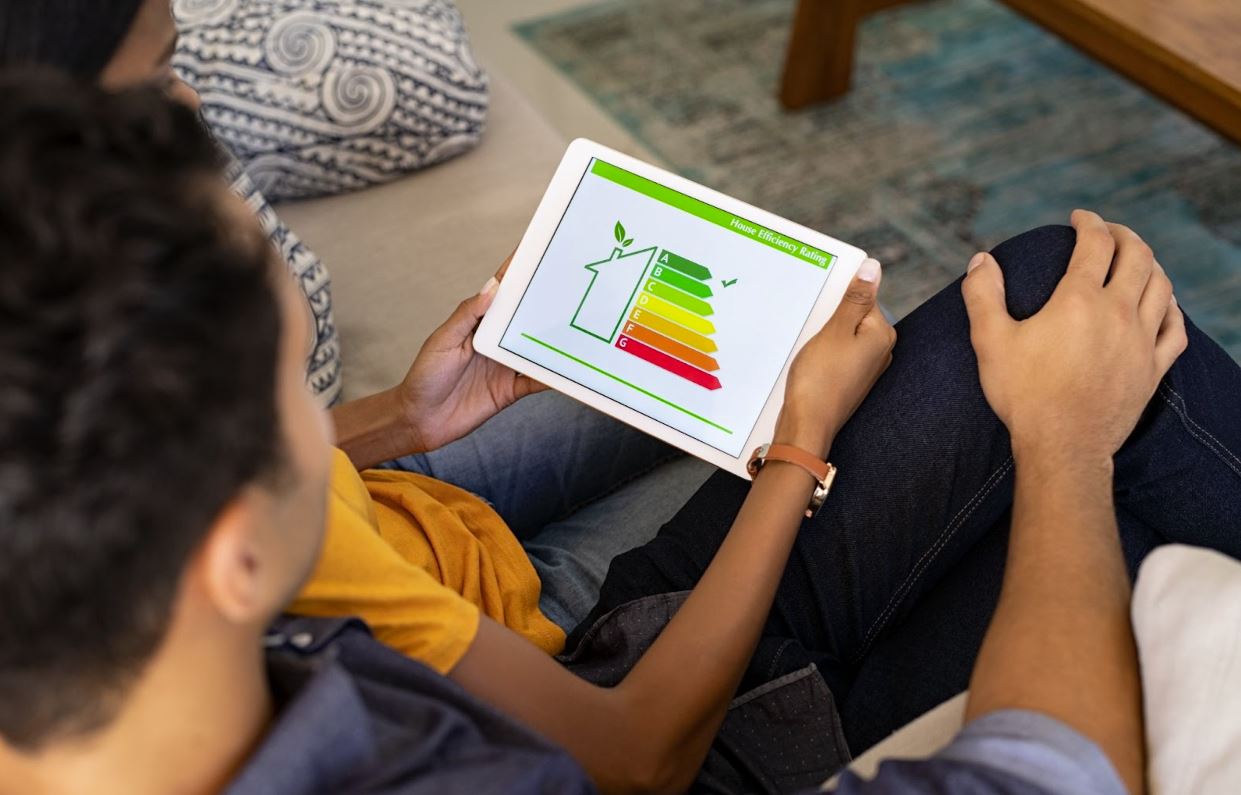As electricity bills climb and environmental concerns become more pressing, energy efficiency has become a significant focus. Many people want to reduce their power consumption but need help knowing where to start. Learning about electrical circuits and understanding how they affect energy use is an impactful way to make a change. Your home's circuits might be vital to lowering your bills and reducing energy waste. Mastering the basics of circuit management and energy-efficient practices can make meaningful, lasting reductions in power consumption.
Electrical Circuits and Their Role in Power Consumption
Electrical circuits power our daily lives and significantly impact energy usage. Whether in homes or businesses, circuits are the pathways for electric currents that energize everything from lights to appliances. Knowing how different circuits manage and distribute energy can help you make smarter choices about power use.
What Is an Electrical Circuit?
An electrical circuit is a closed loop that allows electricity to flow through a connected path, providing energy to devices and appliances. Circuits create a pathway for electrical current from the power source to each device and back again. Every switch, plug, and appliance adds complexity to the circuit's load, affecting its efficiency. More complex circuits can handle higher loads and draw more power, so managing circuits effectively is crucial.
Power Consumption in Circuits
Electrical circuits consume power based on the load they carry and the devices they support. For example, high-load devices like heaters and air conditioners demand more electricity, increasing the circuit's overall consumption. When multiple devices draw from the same circuit, power demands can soar, impacting energy efficiency. Optimizing circuit loads can lead to lower consumption and reduced costs.
Types of Electrical Circuits and Energy Efficiency
The type of electrical circuit can impact energy use and efficiency more than many realize. Different circuit types manage energy uniquely, so choosing the proper setup for your needs is essential.
Series Circuits
Series circuits use a single path for electric current, meaning each connected device shares the same power source. This arrangement can reduce overall energy demand as devices operate simultaneously. However, series circuits have limits in handling high power needs, so they may not be ideal for homes with extensive power requirements. They work well in smaller setups, like simple lighting systems, that don't need much energy.
Parallel Circuits
Parallel circuits allow multiple devices to operate independently from a single power source, making them efficient for larger, multi-device setups. This independence gives each device full power, enhancing efficiency for tasks that require high energy output. However, this circuit type can consume more energy since multiple devices may draw power simultaneously. Using timers or smart plugs in parallel circuits can prevent overuse and save energy.
How Electrical Circuits Impact Efficiency Across Seasons
Seasons impact energy consumption by influencing how often and intensely we use our electrical devices. Winter and summer generally see the highest energy usage due to heating and cooling needs, while spring and fall offer opportunities for energy savings. Understanding the relationship between seasons and electrical circuits can help you anticipate and reduce seasonal power spikes.
Winter
Winter often increases power usage as heaters, electric blankets, and lighting work harder to keep homes comfortable and warm. Because heaters are high-load devices, they can strain circuits and raise energy costs. Insulation and energy-efficient heating options can reduce circuit load in the colder months. Smart thermostats that adjust heat based on occupancy can also help keep power usage low.
Summer
In summer, air conditioning units and fans significantly increase power consumption. Cooling appliances typically require energy, mainly if used continuously throughout the day. Strategically using fans and closing blinds can reduce the load on circuits connected to air conditioning systems. Choosing energy-efficient cooling options can also help save energy without sacrificing comfort.
Spring and Fall
The mild weather in spring and fall offers a natural opportunity to reduce power use. Heating and cooling demands drop, but lighting may still contribute to circuit load, especially as daylight hours change. Taking advantage of natural light and reducing appliance use can lessen the load on electrical circuits. These seasons are ideal for making circuit upgrades to prepare for peak seasons.
Common Devices and Their Electrical Circuit Requirements
Household devices often impact energy consumption due to their circuit requirements and usage intensity. Every device, from heating systems to lighting, contributes to a household's overall power needs.
Heating and Cooling Units
Heating and cooling systems are some of the most power-intensive devices in a home. Furnaces, air conditioners, and space heaters pull heavy loads from circuits, often leading to higher power bills. Adjusting thermostats, sealing drafts, and using energy-efficient units can alleviate this load. Smart systems that change based on usage patterns can save power without sacrificing comfort.

Lighting Systems
Lighting can strain circuits, especially in homes with older or less efficient bulbs. Switching to LED lights significantly reduces the circuit load, using only a fraction of the power compared to traditional bulbs. Installing dimmers also helps manage lighting efficiency by allowing lights to operate at lower settings when full brightness isn't needed. Choosing motion-sensor lighting for areas like hallways can further reduce consumption.
Electronic Devices and Appliances
Devices like refrigerators, televisions, and computers can add considerable load to circuits, mainly if left running when not in use. Unplugging or using power strips can reduce power when these devices aren't needed, easing the circuit's demand. Energy-efficient models and devices that enter low-power standby modes can significantly affect long-term energy savings. These steps can lead to a more balanced load on your circuits and lower overall consumption.
Best Practices to Reduce Power Consumption
Reducing power usage involves adopting small but consistent habits to keep circuits running efficiently. Implementing a few best practices can lead to noticeable savings over time. Here are simple yet effective strategies to optimize your circuit use and reduce unnecessary consumption:
Optimize Appliance Use
Run energy-intensive appliances during off-peak hours to minimize circuit strain and reduce costs. Off-peak hours typically come with lower utility rates, allowing you to save while balancing circuit loads. Many modern appliances offer programmable settings, making it easier to schedule their operation. This approach can lead to both immediate and long-term reductions in power use.
Group Devices on Circuits
Grouping similar devices on dedicated circuits helps prevent overloads and improves efficiency. For example, keeping high-consumption devices like washers and dryers on separate circuits from lights can avoid energy waste. This method lets you shut down entire circuit areas when they aren't in use. Grouping devices logically helps streamline power use and prevents unintentional overloading.
Use Surge Protectors and Smart Power Strips
Surge protectors and smart power strips manage circuit load by automatically turning off idle devices. They're handy for electronics that use "phantom" power even when off. Smart power strips detect when a primary device (like a TV) is turned off and cut power to other devices (such as speakers) to prevent waste. These devices add a superficial layer of control to your circuit management, helping to avoid unnecessary power consumption.
The Basics of Electrical Load and Circuit Capacity
Knowing the basics of electrical load and circuit capacity is vital for keeping energy use efficient and safe. Circ overloading can lead to power loss, increased bills, or even hazards like overheating. Managing load effectively allows circuits to run smoothly without strain or excessive consumption.
Calculating Circuit Load
Calculating circuit load involves adding up the wattage of all devices connected to a circuit. For example, a 15-amp circuit can safely handle up to 1,800 watts. Knowing the load capacity helps you avoid overloading circuits and ensures each can run efficiently. This knowledge also allows you to redistribute devices to prevent overuse on any single circuit.
Importance of Matching Circuit Capacity With Device Needs
Matching the load of a circuit to the devices it supports prevents energy loss and keeps power steady. Placing high-wattage appliances like air conditioners or refrigerators on higher-capacity circuits prevents dips in power or frequent breaker trips. Regularly checking your circuit's capacity ensures all connected devices operate safely and efficiently. That reduces wear and tear on the circuit and helps avoid unnecessary energy use.
Recognizing Signs of Overloaded Circuits
Tripped breakers, flickering lights, and warm or buzzing outlets are signs of an overloaded circuit. These indicate that the circuit may take on more load than it can handle, which could lead to hazards. Reducing the number of devices or redistributing them to other circuits can help balance the load and save energy. Being mindful of these signs lets you maintain efficient and safe power use.

Efficient Power Choices for a Greener Home
Making minor, mindful adjustments to managing electrical circuits can significantly save and reduce energy waste. When you understand how circuits impact power use, you gain control over consumption, protect your devices, and reduce your environmental footprint. Each step brings lasting benefits for your wallet and the planet, from choosing efficient appliances to optimizing seasonal power usage. Embrace these strategies today, and turn your home into a model of energy efficiency.
For more practical advice on lowering power consumption, explore our GC Electrical Service Inc. blog.


